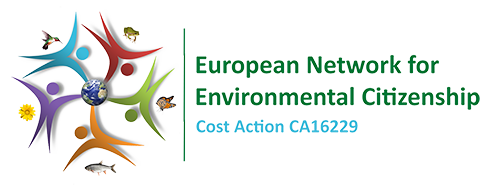Search Results Resources
You have searched in Resources with the following criteria: << Go Back
University Education
The search returned 57 results.
Andreas Ch. Hadjichambis
- From
- 13
- To
- 25+
Environmental crime on the coast
Greek
Cyprus
- Knowledge
- Skills
- Competencies
- Values
- Attitudes
- Behaviours
- Social Aspects of Environmental Citizenship
- Environmental Citizenship General
- Individual actions
- Actions in Private sphere
- Actions in Public sphere
- Actions in Local scale
- Actions in National scale
- Preventing new environmental problems
- Solving environmental problems
- Addressing structural causes of environmental problems
- Achieving critical & active engagement and civic participation
- Practising environmental rights & duties
- Developing healthy relationship with nature
- Achieving sustainability
- Inquiry
- Sustain Environmental and Social Change
This one-day program includes the participation of students in a series of activities with theoretical and practical direction and is based on the pedagogical methodology of problem solving. It is organized in such way as to support the understanding of environmental concepts and issues by anchoring students in an exciting learning adventure for them. Mission: Students arrive on the Coast and are informed that as members of the “Department of Environmental Crimes Investigation” they are called upon to solve a crime involving the area. Solving the mystery requires students to go through different document collection stations, to evaluate testimonies by participating in various experiential activities. Creation of sand dunes: Students drawing information from scientific articles, tables of abiotic factors and study of specific life factors, know the ecosystem of dunes and study how to create and develop them through experimental and playful way. Food webs: Students, using the evidence they collect about the food relationships of Coastal organisms, discover the Food webs of the Coast. Thus, they delve deeper into the concepts of food relationships, while at the same time recognizing organisms in the area and their relationships with each other. The effect of garbage: Students study and discover various presumptions that are related to the time of decomposition of different waste and their effect on the Coastal ecosystem. Through the data they collect and activities related to their rate of deconstruction, students wake up environmentally and realize the effects that anthropogenic waste can have on natural ecosystems. The coast and the humans: Students identify and study various presumptions that are directly related to the presence of human on the Coast and the consequences of anthropogenic activities in the ecosystem. They explore and outline human’s relationship with the shores. Solving the Problem: The data collected and answered specific questions that help the students in solving the mystery unfolding on the Coast are processed. They understand the importance of sustainable coastal management and protection and develop environmentally friendly attitudes and values. Action: Students returning to their school are asked to continue their action at the individual and collective level (class, school, community) to protect the coasts.
Andreas Ch. Hadjichambis
- From
- 6
- To
- 25+
Ecology of Cyprus Coastal Threatened Habitats
Greek
Cyprus
- Knowledge
- Social Aspects of Environmental Citizenship
- Political Aspects of Environmental
- Citizenship
- Individual actions
- Collective actions
- Actions in Private sphere
- Actions in Public sphere
- Actions in Local scale
- Actions in National scale
- Developing healthy relationship with nature
- Networking and Sharing in Scales
- Sustain Environmental and Social Change
Andreas Ch. Hadjichambis
- From
- 18
- To
- 25+
Investigating the Effectiveness of an Inquiry-Based Intervention on Human Reproduction in Relation to Students’ Gender, Prior Knowledge and Motivation for Learning in Biology
Greek
Cyprus
Despite the importance of understanding how the human reproductive system works, adolescents worldwide exhibit weak conceptual understanding, which leads to serious risks, such as unwanted pregnancies and sexually transmitted diseases. Studies focusing on the development and evaluation of inquiry-based learning interventions, promoting the knowledge of human reproduction, are very few. The purpose of this study was to evaluate the effectiveness of an inquiry-based intervention on human reproduction in relation to students’ gender, prior knowledge and motivation for learning in biology. Data collection methods included students’ pre- and post-tests, evaluating students’ conceptual understanding regarding human reproduction, and measurements of students’ motivation employing the Motivational Learning Environment survey. The sample for the pre- and post-test conceptual understanding data included the whole population of the 7th graders in Cyprus (n = 6465). Students’ motivation data were collected from a representative sample of the entire 7th graders population (n = 946 students). Statistical analyses indicated a statistically significant increase in students’ conceptual understanding as well as in their motivation for learning in biology. However, students’ gender, prior knowledge and initial motivation for learning in biology seemed to mediate the effectiveness of the inquiry-based intervention. All of these variables are deemed, therefore, as of great importance for the design, implementation and evaluation of biology teaching interventions.
